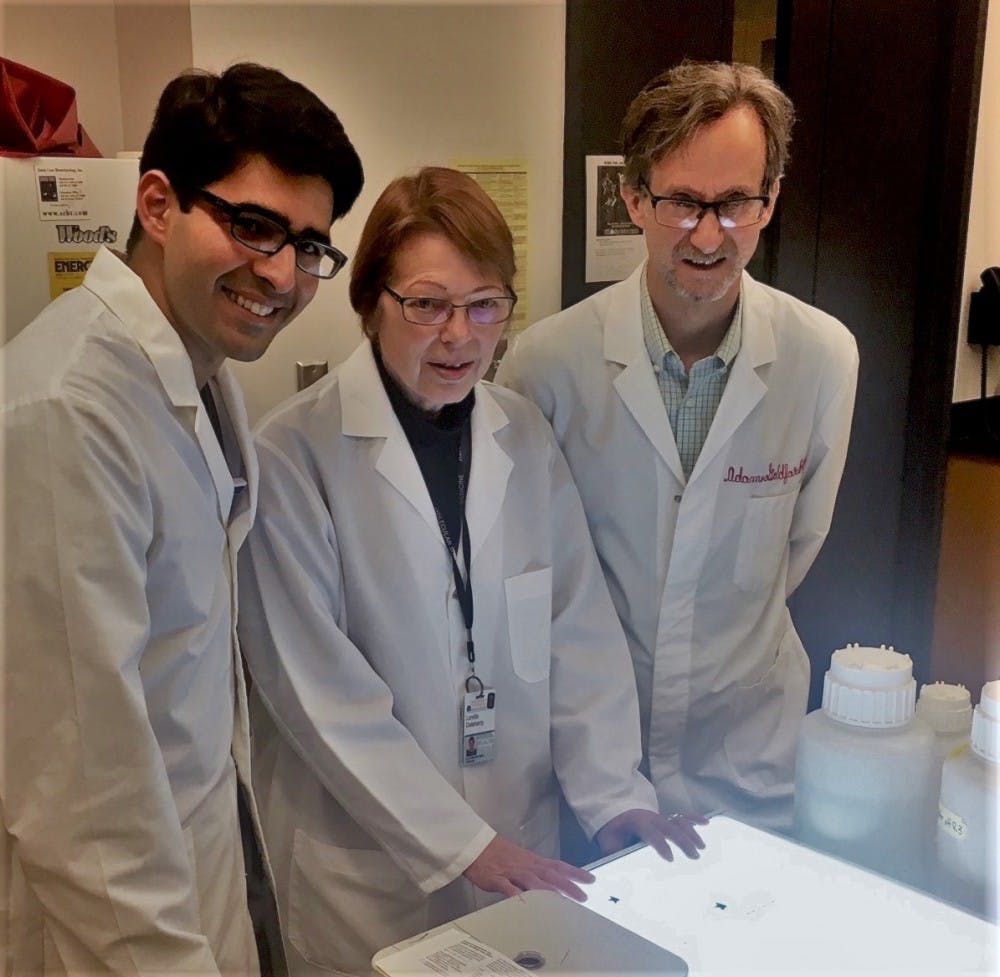Research in the lab of Dr. Adam Goldfarb through the University Health System has yielded a previously undocumented relationship between bone marrow cell receptors and red blood cell production, with the potential to improve anemia treatment.
While there are different types of anemia, all are characterized by an insufficient amount of red blood cells, leading to fatigue, dizziness, weakness and shortness of breath. According to the World Health Organization, anemia affects 1.62 billion people worldwide, or nearly 25 percent of the global population.
The research examines several unique aspects of blood cell production. Researcher Lorrie Delehanty , an experienced cell modeler, replicated conditions that cause anemia in order to pinpoint the harmful transitions that red blood cells undergo when deprived of oxygen. In addition, M.D./Ph.D. student Shadi Khalil joined Goldfarb and Delehanty a few years ago looking to learn how red blood cells detect changes in the availability of iron.
“I came to all of this just liking biology a lot and really liking to think about cells,” Khalil said. “It’s been really interesting studying the blood in Dr. Goldfarb’s lab. Working under his guidance, and working alongside Lorrie and seeing what everyone’s working on and which questions stood out, that’s what led us down this journey.”
Recently, Khalil and Delehanty independently made surprising discoveries. While Khalil observed anemic bone marrow cells under the microscope, he noticed the receptor for erythropoietin, a hormone that signals marrow cells to produce red blood cells, pooled inside the cells, rather than on the surface.
“[N]o matter how we looked at it, whether with immunofluorescence or different kinds of biochemical methods to determine how much EPO [erythropoietin] receptor is on the outside of the cells, it all held up that there was a lot of EPO receptor on the inside of the cells, and it’s really carefully regulated how much comes to the surface of the cells,” Khalil said.
Meanwhile, Delehanty worked with her anemia-in-a-dish model, restricting red blood cells’ iron intake to replicate anemic cells. When she compared protein levels with normal red blood cells, she found that the artificially anemic cells were missing an integral protein —Scribble — needed to transport erythropoietin receptors to the surface of blood cells.
“It’s like the express ferry,” Delehanty said. “It turns out that the Scribble was missing; the ferry was gone. That was a big part of the story, that the EPO receptor binds to Scribble and is carried throughout the cell.”
With this information, Goldfarb and his colleagues concluded that the amount of iron in the body is linked to the amount of red blood cells produced. Specifically, iron signals Scribble to bring erythropoietin receptors to the surface of bone marrow cells. With the receptors on the outside of the cells, the hormone erythropoietin can signal them to produce more red blood cells.
“Ultimately EPO, that hormone, and its ability to stimulate the marrow cells is what determines the number of red cells, how many we produce,” Goldfarb said. “This mechanism is a link that ties in the amount of iron in your body with how the EPO acts on the marrow cells to stimulate red blood cell production.”
These findings are only a small portion of the larger picture, though. There is still much to learn about the complex relationship between bodily iron levels to red blood cell count.
“If you think of the pathway from the origin to the end of the story, we found the Scribble, which is somewhere in the middle, and we want to keep moving up to what’s the first protein that makes the signal, or what is the first signal,” Delehanty said.
As the team continues to search for these intermediate steps that complete the story, they hope that their progress will aid in the treatment of various illnesses. In particular, anemias associated with kidney failure, cancer, chronic infections and aging share similar mechanisms to iron-deficient anemia, meaning that further research could be applicable to a large number of patients.
“It’s known now that these anemias impair lifestyle and shorten lifespan, and the amelioration of those anemias can really make a difference in public health,” Goldfarb said. “By understanding this clockwork mechanism, and by developing small, simple molecules that can trick the marrow into thinking iron is there, we can bypass this blockade and stimulate the marrow to produce red blood cells and thereby improve anemia under certain conditions and chronic disease.”







